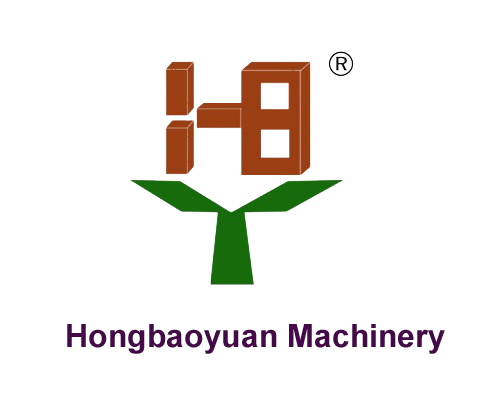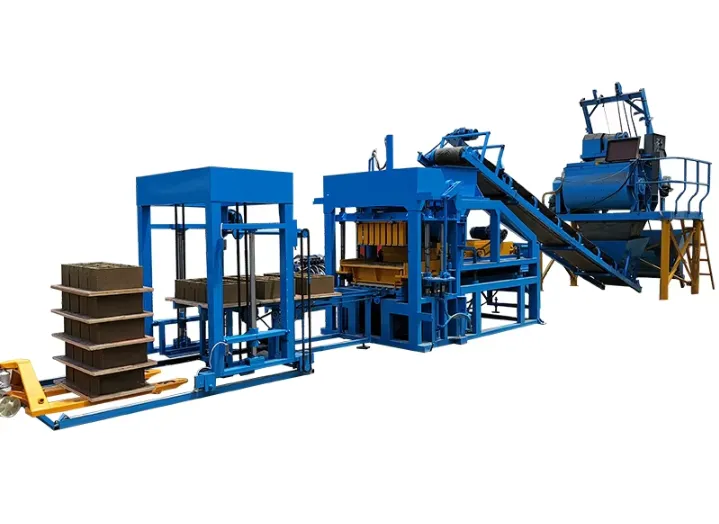Precision Control of Key Production Parameters
Modern block making machines achieve ±2% moisture consistency through automated water injection systems, directly addressing brick strength variability. This precision prevents structural flaws caused by excess water (leading to cracks) or insufficient hydration (causing brittleness) in finished blocks.
Moisture Regulation for Consistent Brick Quality
Integrated sensors monitor raw material humidity 240 times per minute, adjusting water inputs within a 0.5-second response window. A 2023 Clay Products Association study found this reduces post-curing cracks by 40% compared to manual mixing methods.
Pressure Calibration and Its Impact on Block Strength
Precision hydraulic systems maintain 18–22 MPa pressure during compaction, essential for meeting the ASTM standard of 12.5 N/mm² minimum compressive strength. According to a 2024 Materials Engineering Report, calibrated pressure profiles improve block density consistency by 34%.
Temperature Management During the Curing Phase
Thermostatically controlled chambers maintain 35°C±1°C during hydration, accelerating cure times while preventing thermal stress defects. This closed-loop system eliminates the 30% quality variance seen in open-air drying environments.
Integrated Electrical Systems for Stable Machine Performance
Voltage regulators and surge protectors ensure ±2% power stability, preserving servo-motor accuracy during compression. Research from Advanced Process Control studies shows unified electrical architectures reduce unplanned downtime by 62% in block production cycles.
Automated Inspection and Real-Time Defect Detection
Modern block making machines integrate automated inspection systems that detect 98.7% of defects (Manufacturing Vision Report 2023), outperforming manual checks. These systems use sensor arrays and industrial computing to screen every brick before curing, eliminating flawed units early.
Real-Time Visual Scanning for Surface Imperfections
The high speed cameras take full 360 degree pictures of surfaces with a resolution of 0.04mm per pixel, spotting cracks, chips and color changes in just under half a second per brick. Smart software then checks these images against a massive database containing around 50 thousand confirmed defect examples. The system gets things right about 99 times out of 100, which beats what humans typically manage at around 72% accuracy according to UnitX Labs research from last year. What makes this really impressive is that it keeps running non stop during production, handling as many as two thousand bricks every hour without missing a beat.
Weight and Dimensional Tolerance Monitoring
Integrated load cells and laser micrometers verify three critical parameters:
- Block density (±1.5% tolerance)
- Geometric precision (<0.3mm dimensional variation)
- Interlocking groove alignment (±0.2mm positional accuracy)
Deviations trigger immediate redirection of material flow, preventing 93% of dimensional defects from reaching packaging (Industrial Automation Journal 2023).
Reducing Human Error with Automated Quality Gates
RFID-triggered checkpoints validate batches before kiln entry, ensuring consistent evaluation across shifts. These systems deliver:
- 40% fewer false approvals than manual reviews
- 24/7 operational consistency
- 30-minute response time to emerging defect trends
By removing subjective judgment, manufacturers report 23% lower return rates and 18% higher customer satisfaction (Global Construction Quality Survey 2023).
Smart Monitoring Through Sensor Technology and IoT Integration
In-Line Sensors for Density and Hardness Tracking
Laser-guided in-line sensors detect material density variations as small as ±0.8% and hardness fluctuations within 5 MPa. This real-time monitoring prevents under-cured blocks from progressing, reducing waste by 18% compared to manual sampling (Ponemon 2023).
IoT-Enabled Feedback Loops in Block Making Machine Operations
Wireless IoT systems in Industry 4.0 ecosystems enable 92% faster parameter adjustments. When sensors detect suboptimal clay viscosity, the machine automatically increases hydraulic pressure by 6–12% within 8 seconds, maintaining compressive strength above 12.5 N/mm².
Seamless Data Synchronization Across Production Stages
| Production Stage | Data Synced | Impact |
|---|---|---|
| Mixing | Moisture content | ±0.3% variance control |
| Molding | Feed rate | 23% fewer mold jams |
| Curing | Chamber temperature | 98% thermal uniformity |
This integration reduces interdepartmental quality disputes by 40%, according to 2024 manufacturing audits.
Balancing Sensor Automation with Operator Expertise
While sensors manage 83% of routine monitoring, skilled technicians verify outlier readings using ASTM-certified manual tests. Facilities combining automated alerts with weekly operator recalibrations achieve 99.1% defect-free output—15% higher than fully automated setups.
Predictive Quality Control Using Machine Learning and Data Analytics
Analyzing Historical Data to Forecast Defect Patterns
Machine learning models analyze years of production data—including clay composition, compression rates, and environmental conditions—to predict defect risks with 89% accuracy (Praxie 2023). Manufacturers use these insights to adjust formulations proactively, reducing material waste by 22% based on 2024 industry findings.
Adaptive Algorithms for Proactive Machine Setting Adjustments
Smart self-optimizing algorithms work by constantly adjusting machine parameters based on what sensors are telling them in real time. If the vibration sensors pick up anything off about how materials are compacting, the system will tweak the hydraulic pressure somewhere between 0.3 and 1.2 MPa to keep everything from falling apart structurally. What makes this approach so effective is that it creates a feedback loop where problems get fixed before they become big issues. Factories reporting results say this method reduces rejected products after curing by around 40%, which is a huge improvement over traditional maintenance schedules. Some newer systems even link up with Internet of Things humidity sensors so they can automatically change drying times when seasons shift, making sure quality stays consistent no matter what Mother Nature throws their way.
Case Study: AI Integration in Modern Brick Manufacturing
A North American plant integrated vision-based AI inspectors with its block making machines in 2023, achieving:
| Metric | Pre-AI (2022) | Post-AI (2023) | Improvement |
|---|---|---|---|
| Surface defect rate | 8.7% | 2.1% | 76% reduction |
| Daily output consistency | ±15% | ±4% | 73% stability gain |
| Energy use per block | 0.81 kWh | 0.63 kWh | 22% savings |
The system’s convolutional neural networks analyze 12,000 surface images per hour, detecting hairline cracks invisible to humans while maintaining 99.4% uptime.
Superior Quality Assurance in Machine-Made Bricks vs. Handmade Alternatives
Uniformity and Structural Integrity of Block Making Machine Output
Block making machines today basically remove all the guesswork from manual production processes. They keep dimensions consistent across thousands of blocks, staying within about ±1mm tolerance. The result? Walls constructed with these blocks align much better too. Studies from construction material research in 2024 show walls built with machine-made blocks achieve around 98% alignment accuracy, whereas walls using handmade bricks only hit about 76%. The secret lies in hydraulic systems that pressurize each block uniformly between 15 to 25 MPa during compaction. This leads to bricks that can withstand compression forces 30% stronger than those made through traditional artisan methods, typically measuring between 18 and 22 N/mm² when tested.
Long-Term Durability of Machine-Produced Blocks
Automated curing and optimized material ratios allow machine-made blocks to endure freeze-thaw cycles 2.5× longer than handmade equivalents. Industry analysis indicates these bricks retain 95% structural integrity after 50 years in harsh climates, versus 68% for traditional options. The controlled manufacturing process prevents air pockets and moisture retention, reducing weather-related erosion by 41%.
FAQs
What are the advantages of using block making machines over handmade bricks?
Block making machines offer superior consistency, precision, and structural integrity in brick production. They ensure ±1mm tolerance and reduce variability, making walls built with machine-produced blocks achieve higher alignment accuracy.
How do IoT and sensors contribute to brick production?
Sensors and IoT technologies provide real-time monitoring and adjustments in production parameters, such as moisture and pressure levels, ensuring optimal brick quality and reducing waste significantly.
Why is automated inspection important in brick manufacturing?
Automated inspections detect defects more accurately than manual checks, eliminating flawed units early, which enhances the overall quality and consistency of bricks produced.
Table of Contents
- Precision Control of Key Production Parameters
- Automated Inspection and Real-Time Defect Detection
- Smart Monitoring Through Sensor Technology and IoT Integration
- Predictive Quality Control Using Machine Learning and Data Analytics
- Superior Quality Assurance in Machine-Made Bricks vs. Handmade Alternatives
- FAQs

